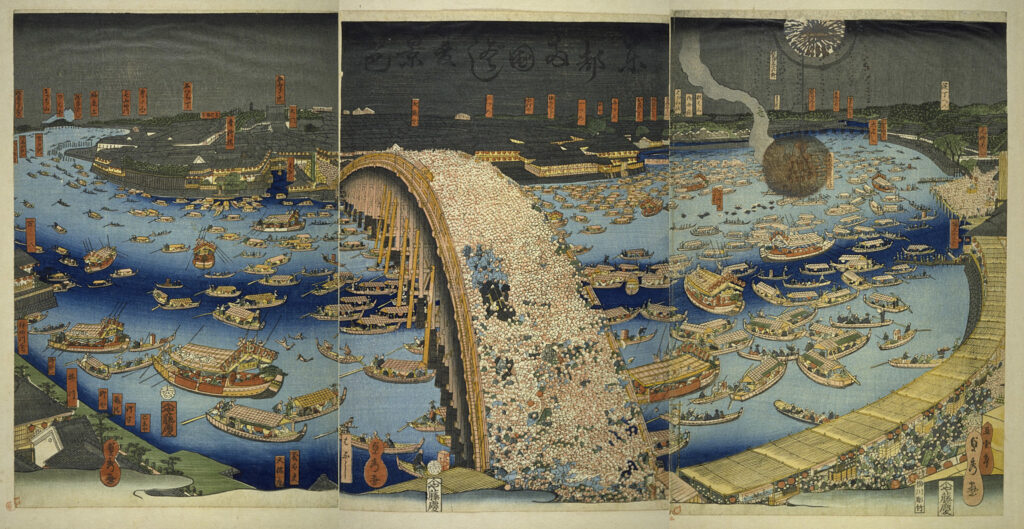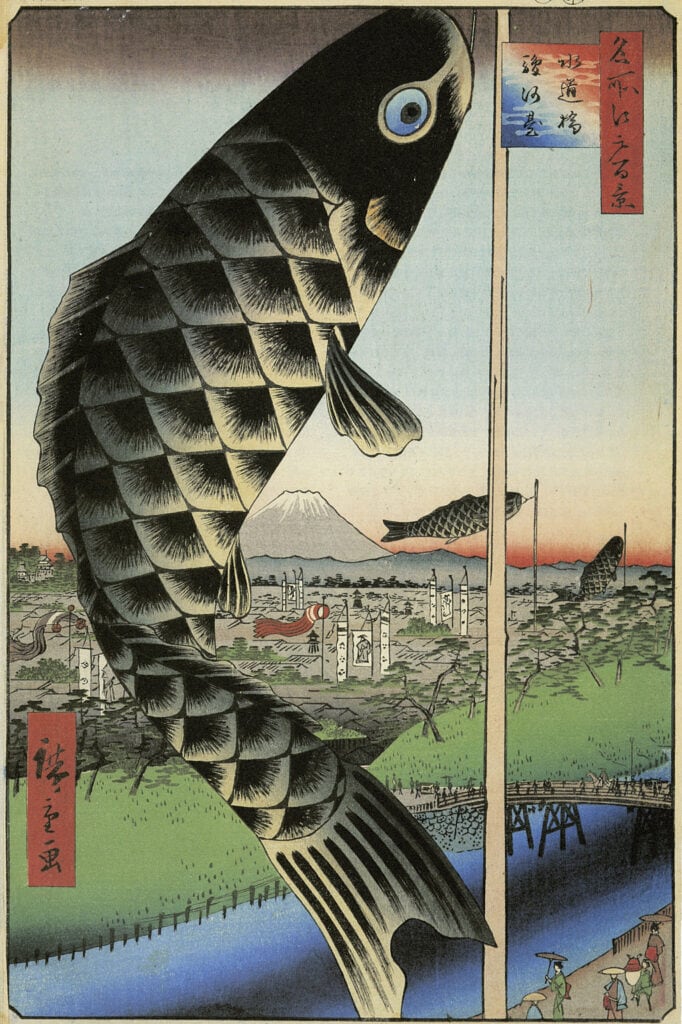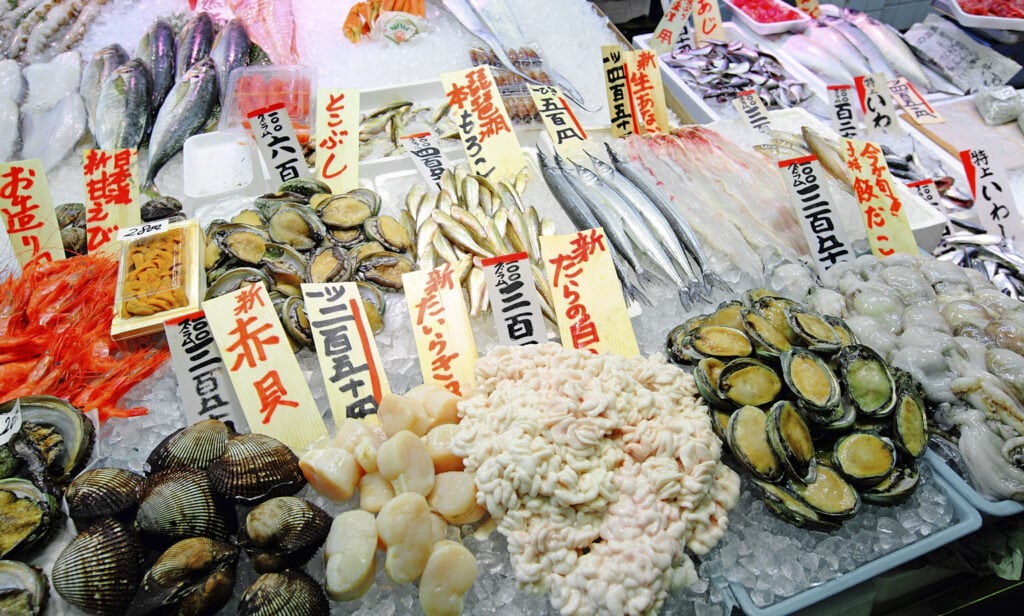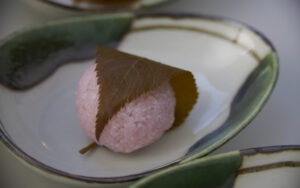Chicken, cream cheese, salmon in chili sauce - there's hardly anything these days that you can't find on Sushi would find. But what are actually the typical, authentic toppings of sushi? It depends...
If you look at sushi in the U.S., salmon, tuna and avocado dominate. In Japan, especially the two types of fish can also be found, but both are not really "original" in this way.
Sushi toppings are also subject to fashions and trends. Currently (as of the end of 2022), salmon and tuna also dominate more and more in Japan. But that was not always the case, because these two fish in particular only "got on the rice" in the 20th century.
Let's take a look at the decades before 1950 and take a closer look at Edomae sushi, the origin of today's worldwide delicacy.
What used to be sushi topping
There are actually ancient texts that mention sushi.
From these texts, we know what the pampered people of Edo (former name of Tōkyō) preferred, how sushi evolved, and what toppings were preferred in other areas of Japan.
In addition, there are the preserved pictures. Important contemporary witnesses are the woodblock prints by Utagawa Hiroshige from the 1830s.
Although the artist is primarily known for his magnificent city views of Edo, he also captured other subjects in pictures. (cf. https://old-tokyo.info/preparing-for-an-authentic-edomae-sushi-meal/).
A third important source is the menus of Edo's sushi restaurants. One such menu is preserved from what is believed to be Edo's most important sushi restaurant, Hanaya Yohei, dating from 1877.
Documented in woodcuts: Little fish
Even at first glance it is noticeable: Hiroshige has held little fish and much else. We quickly recognize most of the toppings, because they are still popular today. And Hiroshige not only shows Nigiri Sushi on the still life, but an arrangement of Maki sushi and nigiri sushi.
These sushi toppings can be found on Hiroshige's historical woodblock prints:
- Stone shrimp (kuruma ebi 車海老)
- Maki sushi with egg (tamago-maki たまご巻き)
Sea bream (tai タイ) - Herring, more precisely Konoshiro (kohada コハダ)
Tamago maki is also pretty typical today, as is sea bream and rock shrimp as toppings.
Historical menus show all the diversity
Now how does that look on the old menu, which thankfully consists of a collection of painted nigiri sushi and maki sushi? (By the way, this is also typical of Japan: to this day, menus like to be richly illustrated!)
- Big giant clam (mirugai ミルガイ)
- Silago japonica (a type of marlin)
- Inrō-sushi with squid (ika inrō イカインロウ)
- Salangichthys microdon (no German name known, shiro'uo 白魚).
- Trout (masu マス)
- Bastard mackerel/spiny mackerel (aji 鯵)
- Blood Ark/Scarred Ark Shell (akagai 赤貝)
- Ayu (ayu 鮎)
- Mackerel (saba 鯖)
- Nori-Maki
These are already quite different types of fish that are used here. Inrō sushi is extremely rare today. For this type of sushi, the soured rice is packed into squid tubes, which are then cut into thin rolls. Visually, this is reminiscent of maki sushi (minus nori). Ayu is also used rather rarely today.
Little raw fish, lots of seafood
Edomae sushi dates back to a time when there was no viable refrigeration technology.
Fish could therefore not be kept fresh and edible for a longer period of time. This was countered in Edo by marinating, roasting, grilling, boiling or steaming the fish and seafood.
Especially in vinegar and / or Soy sauce pickled mussels were popular toppings. These, like the elaborately prepared eel (which is not shown on Hiroshige's or the historical menu), came directly from the Book of Tōkyō. That the conger eel is still popular today is shown by numerous tutorials on the Internet that describe the preparation in detail (see YouTube, link in the appendix).
What are typical sushi toppings today?
Various shellfish, fish and shrimp are still used as sushi toppings today. Fried egg (tamago-yaki) also remains popular.
Today, more raw fish tends to be used (especially salmon and tuna).
Shrimp are still mostly cooked, as is squid. Many mussels are also heated to this day to enhance the sweetness of the soft flesh.
Every fish, every shellfish and every other creature has its own special way of preparation. Care is always taken to bring out the best of the ingredients, both in terms of taste, texture and appearance (see https://r.gnavi.co.jp/g-interview/entry/yandp/5000).
Seasonal toppings
Sushi toppings are seasonal. This was the case in the past and can still be observed today. This is because some fish and seafood have never been available year-round due to their natural migrations (see https://magazine.hitosara.com/article/2513/).
Octopus (tako) and squid (ika), sea urchin (uni), tuna (maguro), plaice (karei), shrimp (ebi) and abalone (awabi) are available year-round.
Spring
In spring, on the other hand, these toppings were and are typically served:
- Sillago (kisu キス)
- Mackerel pike (sayori サヨリ)
- Yellowtail mackerel (hiramasa ヒラマサ)
- Cockle (torigai 鳥貝)
- Trough mussel (aoyagi アオヤギ)
- Small mussel (asari アサリ)
- Clam (hamaguri 蛤)
- Luminous squid (hotaru-ika ホタルイカ)
- Giant venus clam (shako シャコ)
Summer
In summer, on the other hand, these toppings are preferred (see https://www.cookdoor.jp/useful/news/125/summer/):
- Bastard mackerel/spiny mackerel (aji 鯵)
- Yellowtail
- Spiny mackerel (shima-aji 島鯵)
- Japanese sea bream (suzuki スズキ)
- Bonito (katsuo 鰹)
- Horn snail (tsubugai ツブ貝)
- Isaki (isaki イサキ)
- Scabbardfish (tachiuo 太刀魚)
- Conger eel (anago 穴子)
Fall
For autumn, on the other hand, toppings like
Mackerel (saba 鯖), young Konoshiro (kohada コハダ), bonito (katsuo 鰹), large amberjack (kanpachi カンパチ) and large giant clam (mirugai ミルガイ), and salmon spawn (ikura イクラ).
Winter
Sushi toppings include marlin (kajiki カジキ), Japanese yellowtail (buri ブリ) and young yellowtail (hamachi ハマチ), Japanese mackerel (sawara サワラ), butt (hirame ヒラメ), Sea bream (tai タイ), squid (kōika コウイカ), blood ark or grained ark clam (akagai 赤貝), and crab meat (kani カニ), shrimp (amaebi 甘エビ), and many more.
So we see: In winter and spring, mollusks and crustaceans dominate together with mackerel, while in summer and autumn more different fish are eaten.
Why is there avocado on sushi?
Avocado is extremely fatty and has a smooth, soft texture. In many Western countries, foods with these properties are particularly popular. Just think of the preferences for salmon and fatty tuna, for well-marbled meat and the like. Japanese, in fact, is not.
However, in the course of the worldwide triumph of sushi, local variants have emerged again and again, which, although not originally Japanese, have somehow found their way back to Japan.
Therefore, in restaurants frequently frequented by travelers from the West, these sushi toppings can now also be found.
Especially in the USA, a lot has happened in terms of creative sushi toppings. Surimi (pressed fish meat), shrimp combined with avocado, tuna and salmon dressed with chili and mayonnaise, cream cheese and deep-fried chicken are just a few examples.
Do you have questions about sushi toppings?
What interests you around the topic of sushi toppings? We will be happy to research and answer further questions about the history and history of sushi. Write us a message via the contact form!
Sources
https://www.japanwelt.de/blog/sushi-arten-und-sorten-mit-namen-und-bildern-erklaert
https://tokyotabletrip.com/en/365
https://sushiuniversity.jp/basicknowledge/types-of-edo-style-preparations
https://old-tokyo.info/preparing-for-an-authentic-edomae-sushi-meal/
https://www.nippon.com/en/views/b01706/
https://r.gnavi.co.jp/g-interview/entry/yandp/5000









